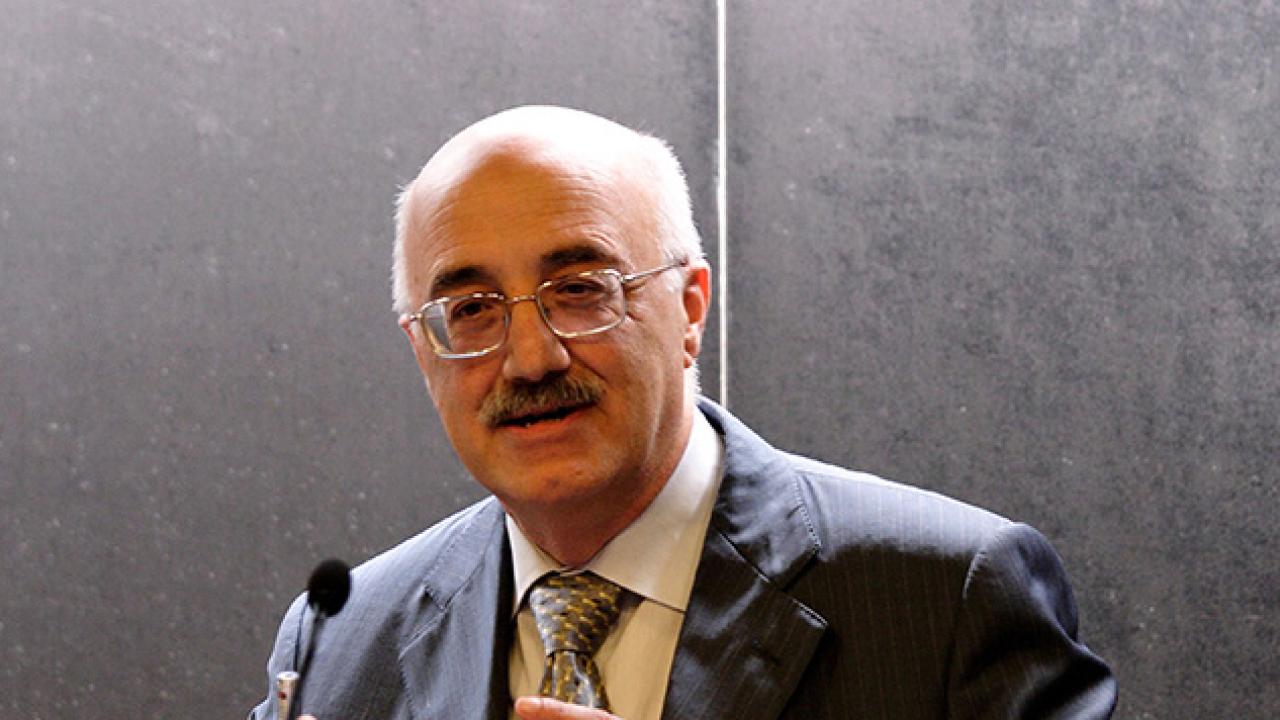
Michele Parrinello is no stranger to ICTP. In the 1980s, the Italian physicist and his colleague Roberto Car conducted research at ICTP, the International School for Advanced Studies (SISSA) and the University of Trieste that led to the development of the revolutionary Car-Parrinello molecular dynamics simulation method for condensed matter. The method has provided an all-important quantitative understanding of the properties of matter, while also allowing scientists and laymen alike to visualise atoms in motion during physical and chemical processes.
Parrinello, a professor at ETH Zurich and the Università della Svizzera Italiana in Lugano, Switzerland, recently returned to ICTP for its School in Computational Condensed Matter Physics; on 16 September he delivered a colloquium on Atomic Computer Simulations: Past, Present and Future.
Parrinello continues to look for ways to visualize atoms in more computationally efficient ways. In his talk, he acknowledged that in spite of the progress made in atomistic simulations, there remain challenges to widening their scope, including being able to extend the time and length scale of a system being studied.
"It takes a long time and a large number of iterations to get to certain time scales," says Parrinello, adding, "In the most favourable cases, you can only reach a microsecond time scale, if you make an effort." It is a serious and ubiquitous problem, he says. He gives as an example the process of water turning into ice. "It takes many minutes for water to freeze; between microseconds and minutes there is a huge gap!"
This gap in the ability to simulate atoms in their natural time cannot be addressed by more powerful computers, explains Parrinello, because of a very simple reason: "The power of the computer comes from the fact that we have many processors performing parallel calculations. Time evolution is not a parallel thing, it is a sequential thing. So, you can make parallel calculations of the forces but not of the time."
How are we going to bridge this gap? Parrinello refers to a method called metadynamics, which he says "goes a long way--not to solve--but to alleviate greatly the problem so we can perform simulations that were previously deemed to be impossible." The method has been applied to nucleation (when matter transforms from one phase to another) and to the workings of proteins. For the latter, the method has helped researchers understand how to block bad proteins--the ones that cause illness--and has led to a deeper understanding of the structure of proteins. "Without these special techniques, these studies would not have been as successful as they have been," he explains.
















